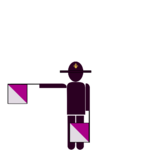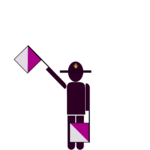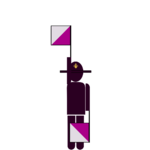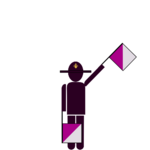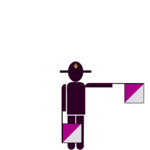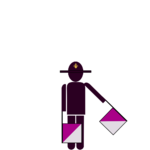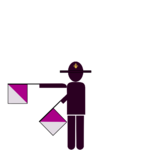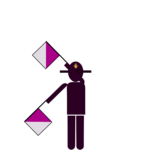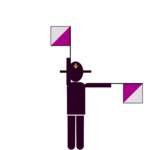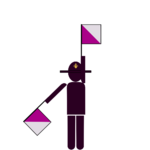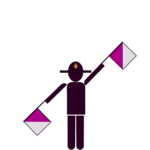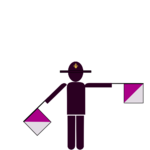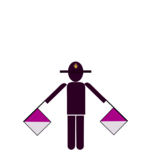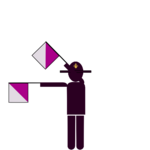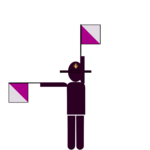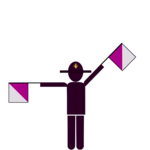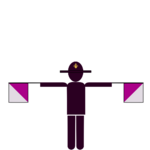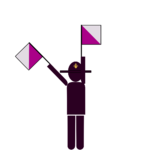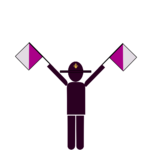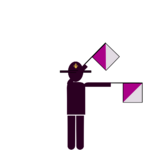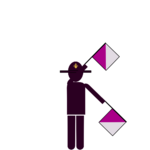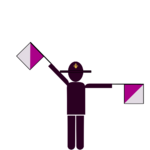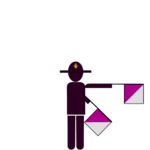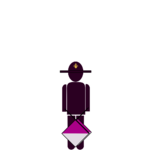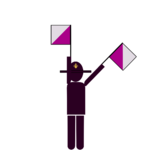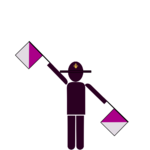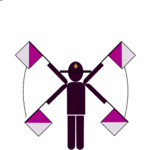Semaphore: Difference between revisions
m (Robot: Automated text replacement (-\[https?://(\w{2}).wikipedia.org/wiki/(\S+) ([^]]+)] +\3)) |
m (Bot: Adding scout-o-wiki:Semaphor) |
||
| Line 56: | Line 56: | ||
[[nl:Semafooralfabet]] | [[nl:Semafooralfabet]] | ||
[[pt:Semáfora]] | [[pt:Semáfora]] | ||
[[scout-o-wiki:Semaphor]] | |||
Latest revision as of 00:15, 21 October 2016
The semaphore or optical telegraph is an apparatus for conveying information by means of visual signals, with hand-held flags. Information is encoded by the position of the flags; it is read when the flag is in a fixed position.
Semaphores were adopted and widely used in the maritime world in the early 1800s. Semaphore signals were used, for example, at the Battle of Trafalgar. This was the period in which the modern naval semaphore system was invented. It is still accepted for emergency communication in daylight or, using lighted wands instead of flags, at night.
Modern semaphore
The newer flag semaphore system uses two short poles with square flags, which a flagman holds in different positions to signal letters of the alphabet and numbers. The flagman holds one pole in each hand, and extends each arm in one of seven possible directions. Except for in the rest position, the flags cannot overlap. The flags are coloured differently based on whether the signals are sent by sea or by land. At sea, the flags are coloured red and yellow (the Oscar (O) flag), while on land, they are white and blue.
Characters
The following semaphore characters are presented as one would face the flagman:
External links
- Semaphore article on Wikipedia
- Semaphore translator (applet) Interactive and animated semaphore translation applet.
- Albert Myer's 1864 A Manual of Signals: For The Use Of Signal Officers In The Field

